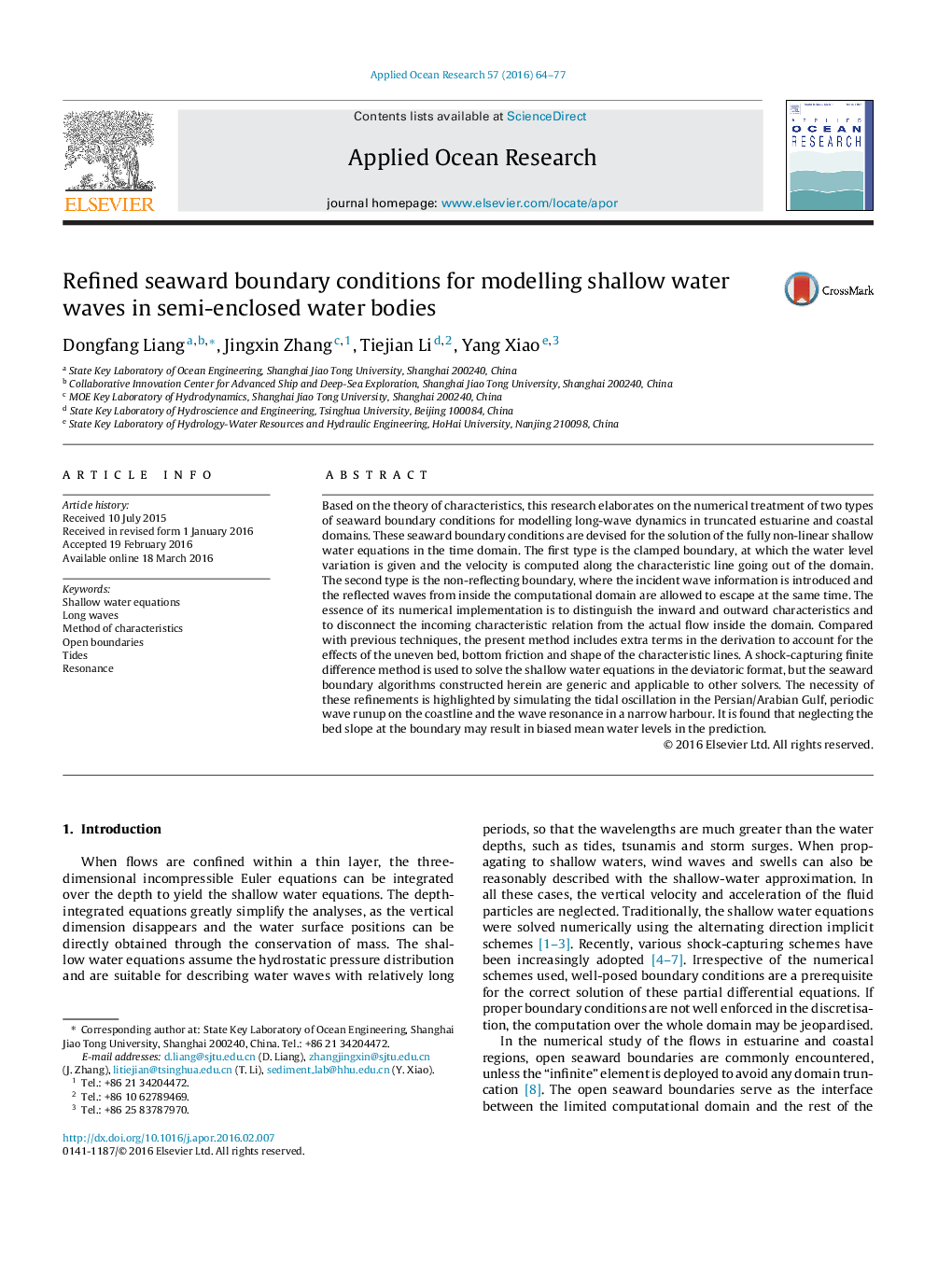| Article ID | Journal | Published Year | Pages | File Type |
|---|---|---|---|---|
| 1719831 | Applied Ocean Research | 2016 | 14 Pages |
•We refine the seaward boundary treatments based on the method of characteristics.•We solve the fully-dynamic shallow water equations in the time domain.•We take into account the wave non-linearity, bottom slope, bed friction, wind and Coriolis effects.•The necessity of the refinements is highlighted through numerical examples.•These treatments are also applicable to other explicit shallow wave solvers.
Based on the theory of characteristics, this research elaborates on the numerical treatment of two types of seaward boundary conditions for modelling long-wave dynamics in truncated estuarine and coastal domains. These seaward boundary conditions are devised for the solution of the fully non-linear shallow water equations in the time domain. The first type is the clamped boundary, at which the water level variation is given and the velocity is computed along the characteristic line going out of the domain. The second type is the non-reflecting boundary, where the incident wave information is introduced and the reflected waves from inside the computational domain are allowed to escape at the same time. The essence of its numerical implementation is to distinguish the inward and outward characteristics and to disconnect the incoming characteristic relation from the actual flow inside the domain. Compared with previous techniques, the present method includes extra terms in the derivation to account for the effects of the uneven bed, bottom friction and shape of the characteristic lines. A shock-capturing finite difference method is used to solve the shallow water equations in the deviatoric format, but the seaward boundary algorithms constructed herein are generic and applicable to other solvers. The necessity of these refinements is highlighted by simulating the tidal oscillation in the Persian/Arabian Gulf, periodic wave runup on the coastline and the wave resonance in a narrow harbour. It is found that neglecting the bed slope at the boundary may result in biased mean water levels in the prediction.
